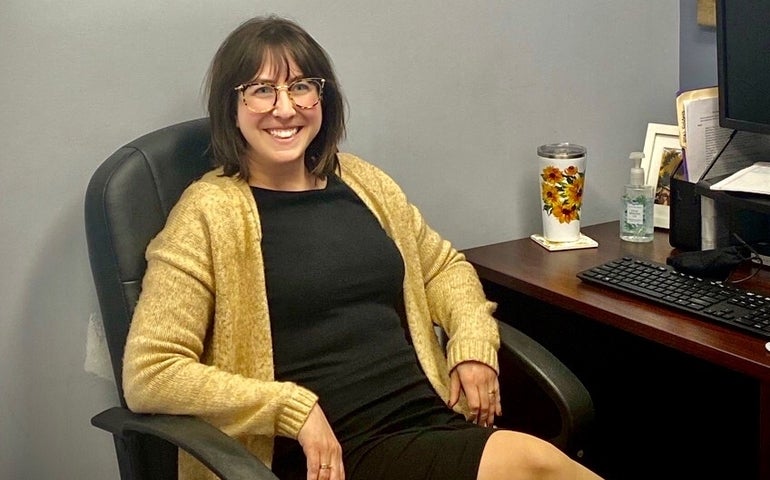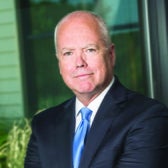Q&A: How Spectrum is handling the spike in mental health needs
 Photo | Courtesy | Spectrum Health Systems
Meg Tillinghast, clinical program director at Spectrum Health Systems
Photo | Courtesy | Spectrum Health Systems
Meg Tillinghast, clinical program director at Spectrum Health Systems
For more than half a century, Worcester’s Spectrum Health Systems has worked to help those affected by mental health disorders or addiction statewide, from facilities in Haverhill and Lawrence to Milford and Leominster to Pittsfield and Great Barrington. Spectrum, a nonprofit started in 1969 in Methuen as the Challenge House, now has 14 facilities, including inpatient centers in Westborough and Weymouth. The challenges it works to help patients overcome never go away easily, with the Massachusetts rate of fatal drug overdoses more than quadrupling in less than 20 years. The challenge has been made harder during the coronavirus pandemic, with polls showing exceptionally high rates of depression and anxiety. Spectrum offers a range of services to get people’s lives in a better place, including outpatient counseling, peer support, medication-assisted treatment and detoxification. One of its clinical program directors, Meg Tillinghast, helps lead operations at Spectrum’s outpatient Pittsfield facility, where a team of nine clinicians provide medication-assisted treatment and therapy services to help overcome addiction.
Spectrum shifted early in the pandemic to giving patients medication to take home for up to 28 days at a time, a major shift from typically having patients come in as often as every day for medication. How has that worked?
We have to look at things in terms of risk management. At the time early last spring, we were hearing about how the virus was really scary. We had to realize our clients were so afraid of not only not getting their medication but also getting sick. They were worried about us closing.
Our protocols from last spring are still in place. Some of our clients were given medication to take home before the pandemic, people who’ve been in recovery for a longer time and been clients for a longer time. Others were on a 13-day cycle, others for six days. We’ve been able in some cases to increase the length from six to 13 days, and it’s made clients look at their recovery in a longer-term way.
Most clients wanted take-homes that made them feel safer and to quarantine at least in those first weeks. They can feel extra supported by not having to come into the program.
How did the pandemic affect how people were feeling at Spectrum?
In the beginning of the pandemic, anxiety was super high, not only just for the staff but also for clients, too. I was fielding calls about what would happen if we had to close; I told them, “We’re essential.” That showed a stigma around addiction that so many clients didn’t think that we were essential. I had to tell them that no matter what, we’d stay open.
As the pandemic progressed, I tended to notice more depression because it wasn’t that new anxiety anymore. The job market wasn’t great, and many folks got laid off.
We’ve seen some clients relapse over this. They feel so much pain – maybe physical pain because they don’t want to go to a doctor out of safety concerns, or mental pain because of the isolation they feel today. They’re not able to be around people like they were before. We look at that as sort of a bump in the road, and what work we need to do to help them. We’ve seen some clients try to self-medicate just to try to feel better. The clinical work never ends.
A lot of therapy sessions have shifted online, and it’s one area that seems to lend itself particularly well to telehealth. How has it worked at Spectrum?
Some clients are super resistant to video sessions in the Pittsfield area. I’ve had a few patients do it, and I’ve done some at-home visits in the past, and that can create a new level of intimacy. When I’m in their home, I can see a bit more about what’s going on in their neck of the woods. I’ve met dogs, I’ve met cats, I’ve met partners, I’ve met parents. In one case, one of our clinicians got a tour of a patient’s house and got to meet the family and see what their life at home was like.
You’ve been at Spectrum for nearly six years. Has the level of need for these services changed?
We had 300 to 350 clients when I started here, and have almost 700 now, so we’ve grown significantly. The program’s been here for eight or nine years, so that shows consistency. Word gets around. Clients know we’re one of the places where they can seek help. Having so many programs can also help ease the stigma.
Could that be a sign of how severe the addiction problem has become, or a case of people who already needed these services now having an additional place to turn for treatment?
I can’t really say specifically whether it’s X, Y or Z. A lot of our clients say they’ve transferred from other methadone or suboxone clinics. For people who need more structure or guidance or accountability, they feel comforted that we’re fully staffed and there’s a nurse they can talk to and other services.
This interview has been edited and condensed by Worcester Business Journal News Editor Grant Welker.













0 Comments